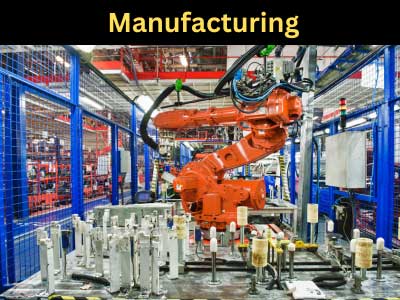Key Takeaway
The main objective of additive manufacturing is to improve efficiency by enabling rapid prototyping and reducing costs. It allows for the creation of objects layer by layer using digital models, which speeds up production while minimizing material waste.
Customization is also a key goal. Additive manufacturing can create tailored products, such as medical implants, that are specific to individual needs. This flexibility reduces the need for large inventories and allows for on-demand production. Overall, the aim is to streamline production processes while offering customized solutions for various industries.
Reducing Waste in Manufacturing
One of the most significant objectives of additive manufacturing is the ability to reduce material waste. Traditional manufacturing processes, like CNC machining, are often subtractive, meaning that excess material is removed from a solid block to create the final product. This process can generate a substantial amount of waste, especially when using expensive or limited materials such as metals or composites.
In contrast, additive manufacturing builds objects layer by layer, using only the material necessary for the part being created. This precision material usage results in little to no waste, making additive manufacturing a more sustainable and cost-efficient option, particularly for industries focused on reducing their environmental footprint.
For example, in the aerospace industry, where materials like titanium are commonly used, the ability to minimize material waste can result in significant cost savings. Reducing waste not only benefits the bottom line but also aligns with global efforts to promote greener manufacturing practices.

Creating Complex Geometries Effortlessly
Another key advantage and objective of additive manufacturing is its ability to produce complex geometries that would be impossible or extremely difficult to create using traditional methods. Traditional manufacturing often involves multiple steps, molds, or specialized tools to achieve intricate designs. Additive manufacturing, however, allows for effortless creation of parts with internal lattices, hollow structures, or organic shapes in a single process.
This capability opens new doors for industries that rely on lightweight designs and structural optimization, such as automotive and healthcare. For example, additive manufacturing enables the creation of lightweight, strong parts like aircraft brackets or medical implants with complex internal structures that improve functionality while reducing weight.
By eliminating the design constraints associated with traditional methods, additive manufacturing fosters innovation and allows engineers to push the boundaries of what is possible in product design.
Shortening Production Times
Speeding up the production process is another critical objective of additive manufacturing. Traditional manufacturing often requires extensive setup, tooling, and assembly, which can lead to long lead times, especially for custom or low-volume parts. Additive manufacturing simplifies the process by allowing engineers to go directly from digital design to physical part without the need for time-consuming intermediate steps.
This makes additive manufacturing an ideal solution for rapid prototyping and on-demand production, where reducing time to market is crucial. In industries like consumer electronics and fashion, where trends evolve quickly, the ability to quickly produce prototypes and small-batch products gives companies a competitive edge.
Additionally, additive manufacturing eliminates the need for costly molds and tooling, further reducing production times for specialized or custom parts. By compressing the production timeline, manufacturers can respond more quickly to customer demands, market changes, and new innovations.
Supporting Customization in Manufacturing
One of the most exciting objectives of additive manufacturing is its ability to support mass customization. Traditional manufacturing often requires large production runs to justify the cost of molds, tools, and setups, making it difficult to offer customized products. Additive manufacturing, on the other hand, makes it easy and cost-effective to produce custom parts and one-off designs without the need for retooling.
This is particularly valuable in industries like healthcare, where products like prosthetics, dental implants, and orthopedic devices need to be tailored to individual patients. 3D printing allows for the creation of patient-specific medical devices with precise fits, improving both comfort and effectiveness.
In other sectors, such as automotive and consumer goods, additive manufacturing enables manufacturers to offer personalized products like custom car parts, footwear, or jewelry, giving customers a unique and individualized experience. This flexibility in design and production is a powerful tool for companies looking to differentiate themselves in a competitive market.
Enhancing Flexibility in Production
The flexibility offered by additive manufacturing is one of its most transformative features. Traditional manufacturing processes require significant planning, setup, and investment in machinery, which can limit a company’s ability to adapt quickly to changes in demand or design. Additive manufacturing offers the ability to produce different parts on the same machine with minimal reconfiguration, making it ideal for low-volume production or custom manufacturing.
For industries like defense or aviation, where parts are often produced in limited quantities and designs frequently change, this flexibility is invaluable. Engineers can produce functional parts, prototypes, and spare components without the need for costly retooling or outsourcing, reducing lead times and allowing for more efficient production workflows.
Additionally, additive manufacturing supports the concept of distributed manufacturing, where production can be decentralized. This allows companies to print parts locally, reducing shipping costs and lead times, while also enabling faster responses to localized customer needs.
Conclusion
The main objectives of additive manufacturing—from reducing waste to enabling customization and flexibility—are driving its widespread adoption across industries. As a new engineer, understanding these objectives will help you grasp why 3D printing is considered a revolutionary force in manufacturing. By shortening production times, allowing for complex designs, and supporting sustainable practices, additive manufacturing is not only changing the way products are made but also shaping the future of modern industry.
The potential of this technology continues to grow, offering engineers and manufacturers the tools to innovate and meet the demands of an increasingly dynamic market. Whether you’re producing a custom medical implant, a lightweight automotive part, or a rapid prototype, additive manufacturing offers unmatched advantages that are transforming production processes worldwide.
